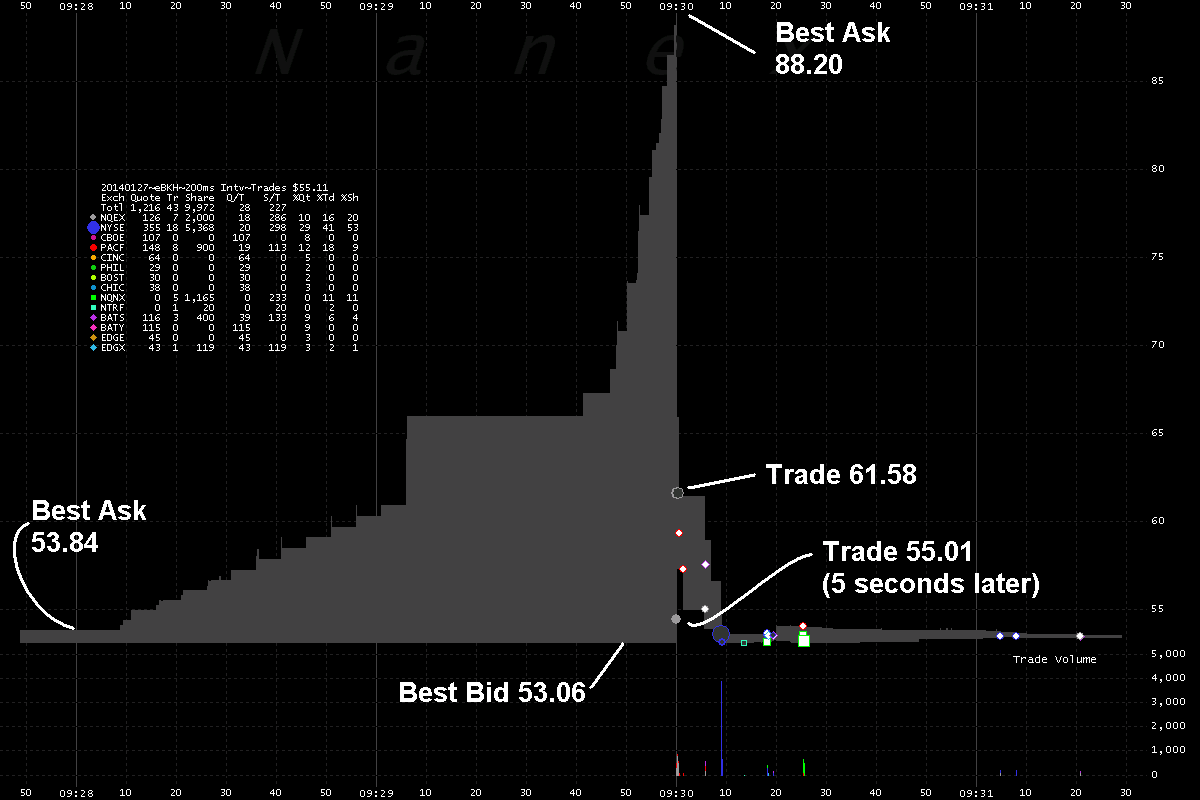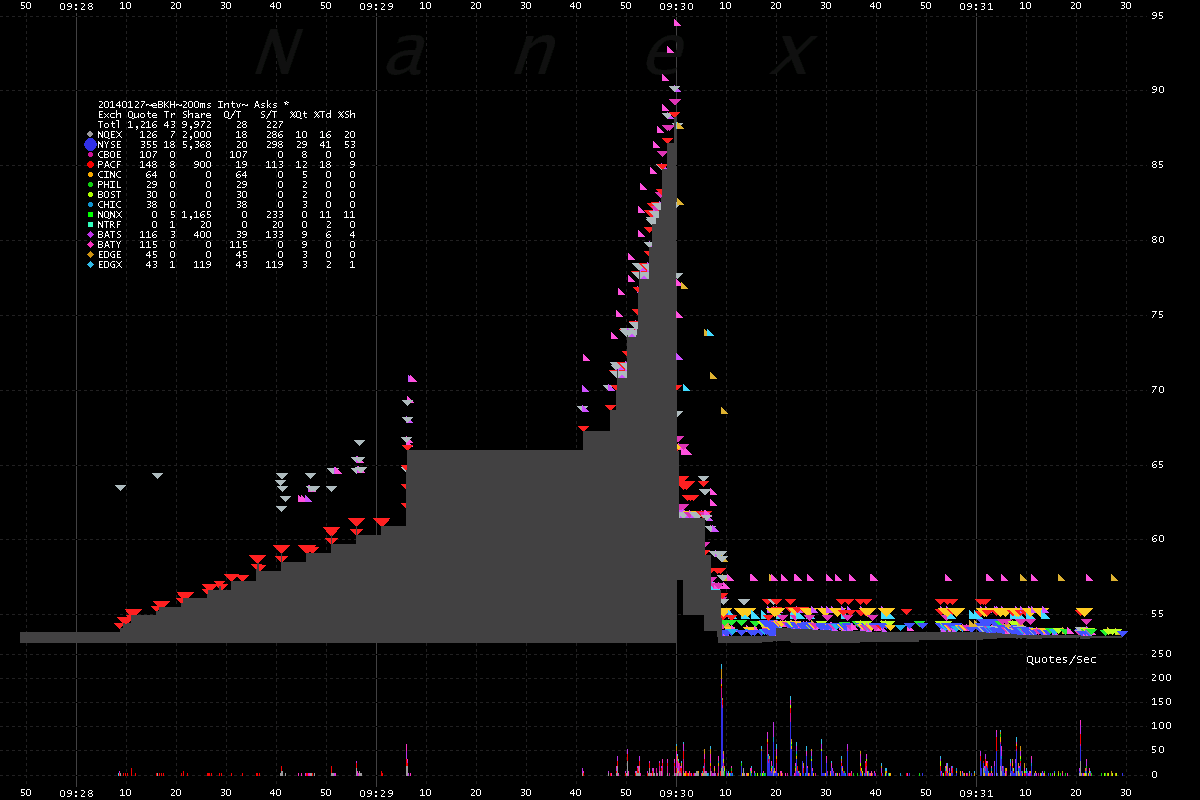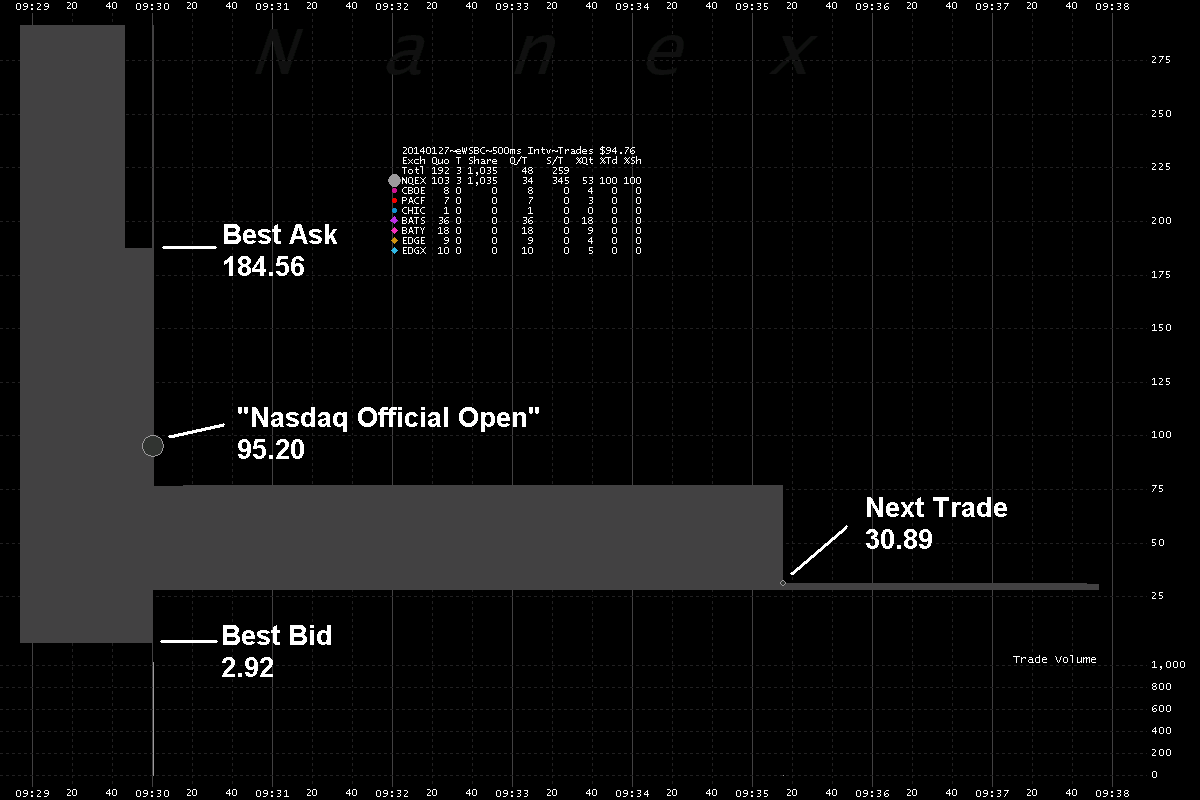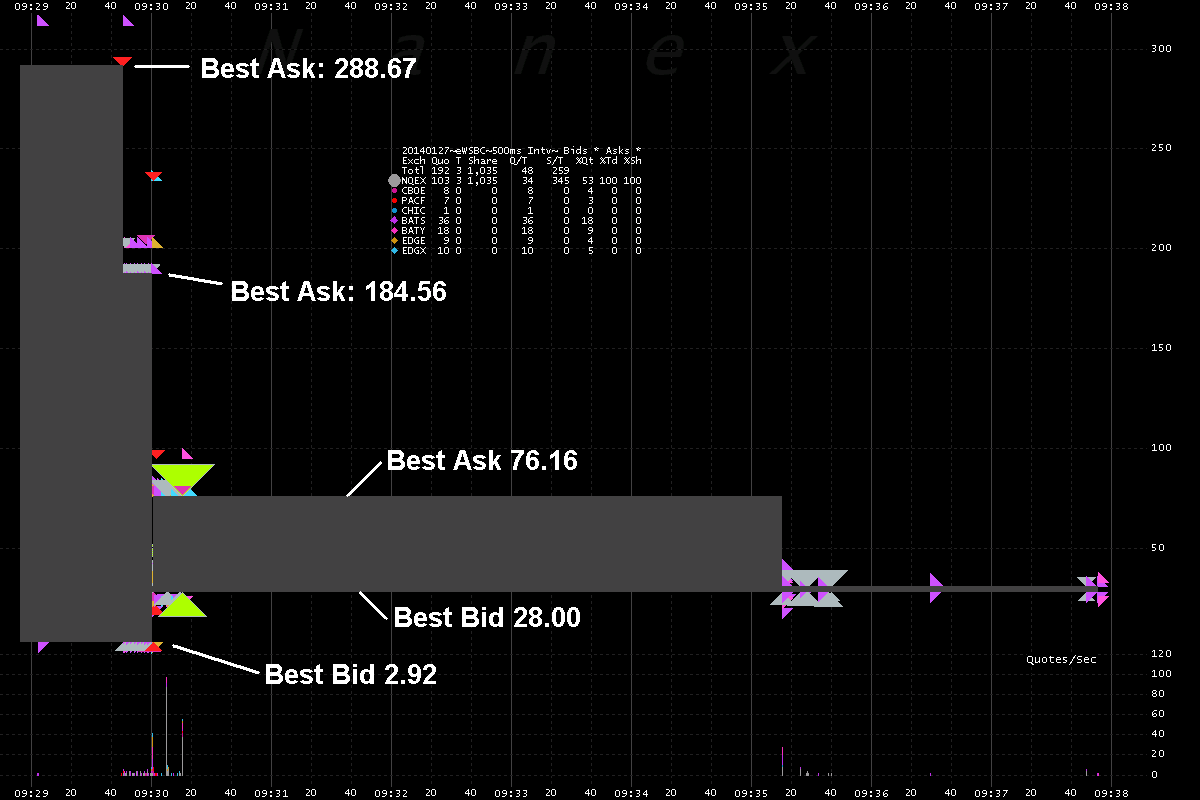Nanex Research

Nanex ~ 27-Jan-2014 ~ Un-Clearly Erroneous
Update: The number of stocks with unusual price swings set at a new
yearly high that day. See Mini Flash Crashes On The Rise.
Update: We think we found what may have caused the wild price swings
- a bad clock.
During the first minute of trading on January 27, 2014 there were wild price swings
in at least 11 stocks: symbols BKH, GEB, HAYN, UBSH, WSBC, FLIC, EFF, GABC, BBOX, SP
and TPZ. We know this because about 90 minutes later, Nasdaq canceled trades in
these symbols citing the
clearly erroneous transaction rule 11890(b).
Pursuant to rule 11890(b), NASDAQ, on its own motion, will cancel all
trades executed between 9:30:00 and 09:31:00 that were 10% or greater from the prior
dayís consolidated close for the stocks listed below. This decision cannot be appealed.
MarketWatch has coordinated this decision with other UTP Exchanges. The stocks affected
are as follows:
"BKH" at or above $58.66,
"GEB" at or above $23.29,
"HAYN" at or
above $57.26,
"UBSH" at or above $26.37,
"WSBC" at or above $32.08,
"FLIC" at or
above $44.70,
"EFF" at or above $20.13,
"GABC" at or above $31.41,
"BBOX" at or
above $31.30,
"SP" at or below $23.03 and
"TPZ" at or above $27.88.
NASDAQ will
be canceling trades on the participantís behalf.
Looking closely at the trade and quoting action, we can't help wonder how (other
than by price) these trades were clearly erroneous. The trades were within the NBBO (National Best Bid/Offer) which means the highest bid and lowest ask from any of the 10 stock exchanges. Do we need more exchanges? Or is there another problem here?
In the stock of Black Hills Corporation (symbol: BKH, market cap $2.4 billion) during
the 2 minutes prior to market open, there were over 200 quote changes from at least
5 exchanges. One could reasonably assume the quoted prices were legitimate as they all
were NBBO eligible and many did in fact update the NBBO. The fact that trades executing
against these quotes were later busted implies that the quotes were not, in fact, legitimate:
why were they allowed in the first place?
The quotes should have been marked: "Warning, trades executing against these orders may
be broken later".
Furthermore, why did it take an electronic exchange 90 minutes to figure out that digitally
recorded numbers (time and sales) violated a rule and should be broken? This decision
didn't require a high tech algorithm or human interpretation: the decision to bust
the trades was based on a simple multiplication and comparison of two numbers for each stock.
When trade executions happen in microseconds, it shouldn't take 90 minutes for a investor
to find out their trade was erased.
Below are charts from two of the affected stocks, BKH and WSBC.
1. BKH Trades and NBBO (National Best Bid/Offer) spread.
Starting about 2 minutes before market open, the ask prices (sell orders) start walking
up from $53.85 all the way to $88.20!

2. BKH Bids and asks color coded by reporting exchange and NBBO.
Ask prices from multiple exchanges all march higher!

3. WSBC Trades and NBBO (National Best Bid/Offer) spread.
The Best Ask was significantly higher, and the best bid was significantly lower just
seconds earlier.

4. WSBC Bids and asks color coded by reporting exchange and NBBO.

Nanex Research
Inquiries: pr@nanex.net




